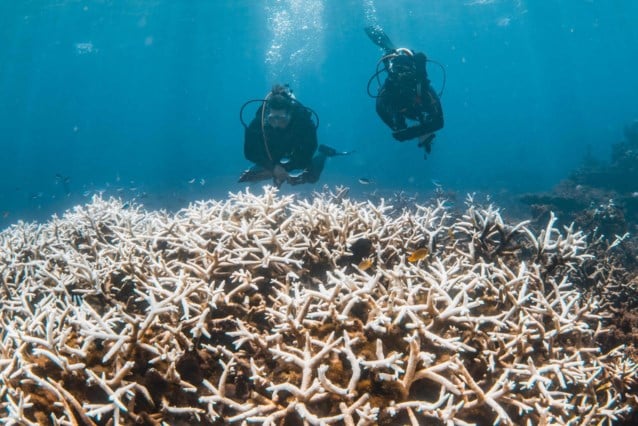In front of the west coast of Australia, a coral reef of hundreds of kilometers has been hit by massive fading because it was literally cooked by the high seawater temperature during the summer. A local NGO announced this on Wednesday.
The Ningaloorif, which appears on the UNESCO World Heritage List and is known as a breeding ground for sharks, has sustained “unseen damage” this summer – which runs in Australia from December 1 to the end of February -, says Oceanologist Kate Quigley of the Menderoo Foundation NGO. “The warmth of the ocean literally cooked the corals this year.”
Although the full extent of the damage to the 300 -kilometer reef still has to be determined, the first findings indicate that it is extensive. “Not only the upper part of the reef is fading and it is also about different species,” the scientist emphasizes.
Three degrees warmer
The water temperature on the west coast of Australia was up to 3 degrees this summer than average, according to the meteorological service of the state of Western Australia. Above a critical threshold value, rising temperatures on the sea surface cause coral stumbling, which can lead to the death of entire reefs.
In practice, this results in the disappearance of coral polyps, leaving only the lime skeleton of the super organisms.
According to Government data, Verzeking also affected the Great Barrier Reef on the east coast of Australia this year. Although the RIF seems relatively unaffected this summer, the Great Barrier Reef has had to deal with massive spraying five times in recent years (2016, 2017, 2020, 2022 and 2024).
Coral reefs, which are particularly vulnerable, accommodate a rich fauna and they protect coastlines by acting as bolders.
